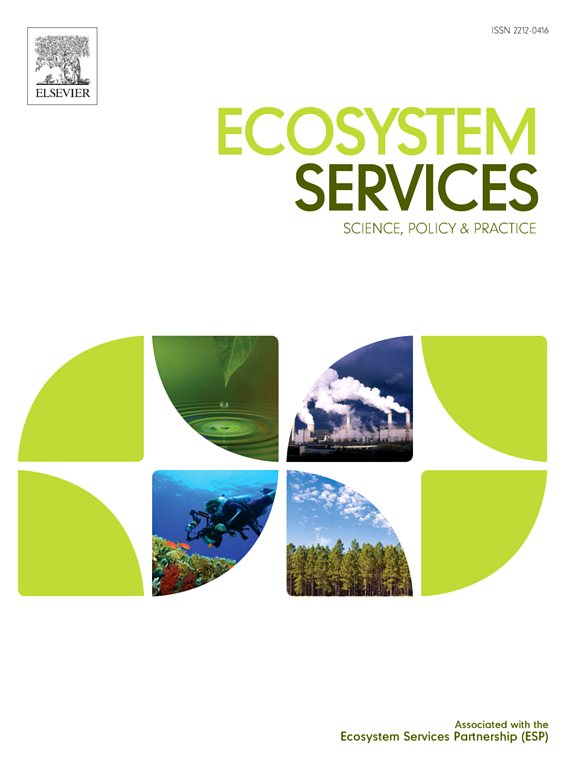大自然对美国鸟类、人类和气候的共同好处
IF 6.6
2区 环境科学与生态学
Q1 ECOLOGY
引用次数: 0
摘要
协同效益的概念在概念和实践上都很有吸引力,因为它表明保护工作可以优化,以保护生物多样性和提供生态系统服务。然而,关于生态系统服务和生物多样性的高质量数据的可得性有限,因此很难从经验上证明在何处以及在多大程度上存在共同利益。利用11种生态系统服务优先区域(自然对人类的贡献)的最新可用数据和479种鸟类的高分辨率丰度数据,我们量化了生态系统服务优先区域对美国鸟类保护的贡献程度。我们发现,生态系统服务优先区域对超过一半的美国鸟类种群的贡献比预期的要大,包括>;75%的森林物种。然而,许多其他物种,包括依赖湿地、水体和干旱区的物种,在生态系统服务的重要区域内代表性不足。效益的空间趋同指向栖息地保护和恢复有潜力帮助生物多样性和人类的地区。尽管存在潜在的共同利益,但我们的研究结果强调了在缺乏经验数据的情况下概括共同利益的危险。本文章由计算机程序翻译,如有差异,请以英文原文为准。
Co-benefits of nature for birds, people, and climate in the United States
The concept of co-benefits is both conceptually and practically appealing, as it suggests that conservation efforts can be optimized to safeguard biodiversity and provide ecosystem services. However, limited availability of high-quality data on both ecosystem services and biodiversity has made it difficult to demonstrate empirically where, and to what extent, co-benefits exist. Leveraging newly available data on priority areas for eleven ecosystem services (nature’s contributions to people) and high-resolution abundance data for 479 bird species, we quantified the extent to which priority areas for ecosystem services could contribute to bird conservation in the U.S. We found that priority areas for ecosystem services can contribute meaningfully—more than expected by chance—to the populations of more than half of U.S. bird species, including > 75 % of forest species. However, many other species, including species relying upon wetlands, water bodies and aridlands were poorly represented within important areas for ecosystem services. Spatial convergence of benefits points to areas where habitat conservation and restoration have the potential to help both biodiversity and people. Despite real potential for co-benefits, our results highlight the danger of generalizing about co-benefits in the absence of empirical data.
求助全文
通过发布文献求助,成功后即可免费获取论文全文。
去求助
来源期刊

Ecosystem Services
ECOLOGYENVIRONMENTAL SCIENCES&-ENVIRONMENTAL SCIENCES
CiteScore
14.90
自引率
7.90%
发文量
109
期刊介绍:
Ecosystem Services is an international, interdisciplinary journal that is associated with the Ecosystem Services Partnership (ESP). The journal is dedicated to exploring the science, policy, and practice related to ecosystem services, which are the various ways in which ecosystems contribute to human well-being, both directly and indirectly.
Ecosystem Services contributes to the broader goal of ensuring that the benefits of ecosystems are recognized, valued, and sustainably managed for the well-being of current and future generations. The journal serves as a platform for scholars, practitioners, policymakers, and other stakeholders to share their findings and insights, fostering collaboration and innovation in the field of ecosystem services.
 求助内容:
求助内容: 应助结果提醒方式:
应助结果提醒方式:


